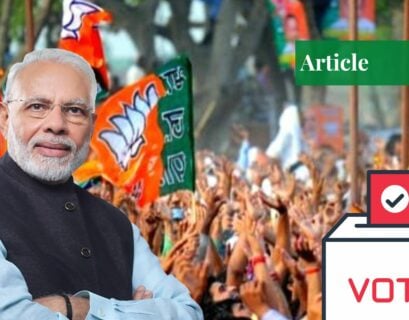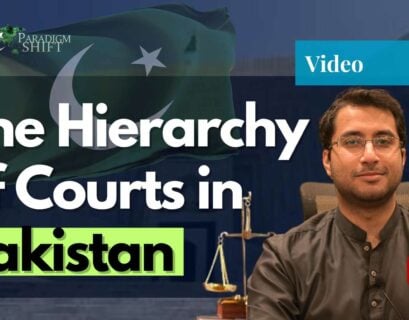Mr Hamza Sharif graduated with a degree in Mechanical Engineering from HITEC University. His areas of interest are geopolitics, current affairs, and history.
All throughout the history of Jammu and Kashmir, the issue has remained a bone of contention between Pakistan and India ever since the independence of both countries. The Kashmir conflict has been the root cause of many conflicts and unrest for the people of South Asia. Both are nuclear-declared countries that have the most advanced and cutting-edge military hardware.
It is frightening to know that world security experts have assessed that the Kashmir dispute is the most dangerous incendiary global issue and that if a nuclear war breaks out between these two countries, it could cause ice-aged temperatures, global famine, and the death of over 125 million people.
Jammu and Kashmir’s Forgotten History
Like most of the princely states in Hindustan, Jammu and Kashmir were also administered as confederation vassals (allowed to maintain a limited army) through their local Maharajas, Bradari patriarchs, and tribal chiefdoms under the Mughal Empire to follow certain subservient obligations imposed by the Mughals.
At the decline of the Mughals, from 1815, the Punjab Hills States, the Jammu and Kashmir state fell successively under the control of the Afghan Amirs, and Sikh Raj administered it from Lahore. The British East India Company took over the area of Jammu and Kashmir during the First Anglo-Sikh War (1845–46).
The Sikhs had to surrender the valuable region and pay an indemnity of 1.2 million rupees. As they could not readily raise this sum, the East India Company (EIC) sold the same area to the Dogra ruler Gulab Singh in exchange for a payment of 750,000 rupees to the Company according to the Treaty of Amritsar, a part of the Lahore treaty, in 1846. Thus Gulab Singh became the first ruler of the newly formed princely State of Jammu and Kashmir, the second-largest principality during the British Dominion.
The Beginning of the Kashmir Conflict
At the time of independence, the British gave the full right to all princely states to determine who they would like to accede to either of the two dominions as per the representation of their population. With a Muslim majority area of 75.94% of around 4 million population in 1947, Jammu and Kashmir were in favor of joining Pakistan.
Raja Hari Singh initially toyed with the idea of remaining independent but since the Muslims were in majority and had already come out on the streets for the alliance with Pakistan, he leaned in favour of joining Pakistan. The Indians, on the other side, did not allow this autonomous right the British gave to the princely states to be implemented in a fair manner.
After immense pressure from the Indian side, Lord Mountbatten (the Interim Governor-General of India), and a secular group of National Conference Political Party (Sheikh Abdullah, Ghulam Muhammad Shah, and Bakhshi Muhammad gang) who supported the Congress party, Raja Hari Singh receded to his earlier inclinations and on 26 Oct 1947, took his decision to join the Indian dominion by executing the “Instrument Accession”.
The said instrument was introduced in the 1935 Act, giving the option to rulers to join the then Federation of British Raj. This action of the Raja was absolutely unethical and unjust, and it infuriated the Muslim majority, resulting in protests and armed motions in the not-so-distant history of Kashmir.
The Indian army rolled into Kashmir along with the Jammu and Kashmir volunteers/constabulary forces, already deployed to quell the insurgency. The situation inside Kashmir got worse when Maharaja’s forces had unleashed tyranny against the local Muslims with the help of the Indian Army. Watching the developments critically, Pakistan decided to take action against the Indian occupied forces that had come inside Kashmir on the Maharaja’s treacherous invitation.
Initially, the Joint defense council (General Claude Auchinleck with the duo General Rod Lockhart and Frank Messervy Chief) demurred and did not allow Pakistan forces to get into Kashmir. However, later the then Army Chief General Douglas Grassey had to succumb, and soon in May 1948, the Pakistan Army responded along with irregular forces (Scouts/Constabulary) and launched two prong advances from Muzaffarabad and Punch Axis joining at Jammu.
In the same war, Pakistan Army lost its young Captain Muhammad Sawar Shaheed (Nishan-e-Haider) who fought at the Chakothi-baramullah axis against the Indian Army. Sensing the likely fall of the state, Nehru preferred going to the UN immediately stating “wherever there is a dispute in regard to any territory, the matter should be decided by a referendum or plebiscite of the people concerned. We shall accept the result of this referendum whatever it may be”.
The northern areas were handed over to Dogra Raj by the British just before independence. However, during independence, Dogra Governor was forced to run away by Major W.A. Brown, Capt. Mathison of Gilgit Scouts along with Col. Aslam Khan and the area was brought under the Pakistan dominion.
The Unsettled Plebiscite
Some may argue that if Hari Singh wanted to accede to India then it was his right as the Raja to do so, but in a similar case, we had the princely state of Junagarh which had a Muslim Nawab and a Hindu majority. Nawabzada Muhammad Mahabat Khan decided to merge with Pakistan, but Indians played fast with the then-state mandarins and immediately arranged a plebiscite under their army’s presence.
The same Chanakyan chicanery was planned by Nehru for Kashmir as well but differently using the UN umbrella. On 1 January, 1948 Nehru raised the Kashmir issue at the UN, claiming aggression by Pakistan on the rightful annexation of Jammu and Kashmir. The UN decreed upon both nations for an immediate ceasefire by 5 January 1948.
On 27 July 1949, a ceasefire was formally announced at the Karachi agreement asking to withdraw forces to create a neutral atmosphere for holding the plebiscite as per the will of the people of Jammu and Kashmir. However, India was allowed to keep minimum required forces for maintenance of law and order before and during the conduct of the plebiscite. This was the catch point vehemently objected by Pakistan.
The Resolution was timid and implicitly favoring accession to India. Many proposals, modifications, and arbitrations were carved after the resolution passed. The mediations by McNaughton, Sir, Owen Dixon and Dr. Graham missions tried acceptance of the modified resolutions but in vain. Sir Owen Dixon suggested some of the best techniques to resolve the Kashmir issue, but the Indian side rejected any proposal put forth.
The United Nations Commission for India and Pakistan (UNCIP) failed because of two reasons. One, both sides never agreed to the fundamental concerns in the resolution. Second was the demise of the Quaid-e-Azam. Thus, India took advantage of this lackadaisical Pakistani political leadership, and on 14 Mar 1949, India announced the special status of article 370 by including it in the Indian constitution and went on to conduct elections in Indian-Administered Jammu and Kashmir in 1951, claiming that there was no need for a referendum anymore.
The Later Years
During 1970-1975, the situation worsened and again the equation totally tilted towards India due to Pakistan’s internal instability within the leadership. In May 1972, India and Pakistan signed the Simla Agreement agreeing to settle all issues and disputes through bilateral negotiation and formally converted the ceasefire line (CFL) to the Line Of Control (LOC). This concurrence of the two countries brought a new dimension to the Kashmir dispute.
In the ’80s, an armed indigenous uprising started in Kashmir intensively to fight out the presence of the oppressing forces. Its success and impact were perceptibly felt by the Indians, who blamed Pakistan for all the ignitions. Pakistan rejected it strongly and emphasized peaceful settlement of the issue.
During 2000-2007, Musharaf came up with a four-point formula: self-governance, demilitarization, irrelevant borders, which implies free movement of people and trade between India and Pakistan, and joint management of Kashmir. Musharaf and Atal Behari Vajpai governments were on the verge of a solution during the Agra visit but deal fell through hours before signing ceremony.
Since the Kashmir issue lacked comprehensive political support from Pakistan’s political parties when subsequent civilian governments came into power, they never took ownership and it scuttled. Things would’ve been far more in favor of Pakistan if our leadership had remained steadfast on the objective after the death of Quaid-e-Azam.
Quaid-e-Azam gave a firm policy in regard to Kashmir, but unluckily his successors indulged in their own politics. Even in the recent election campaigns in Kashmir, none of the political parties were aligned with the interest of Pakistan and the Kashmiri people. Pakistan’s stand has always been indistinct throughout our struggle due to lacking diplomatic vigor, inconsistent political Kashmir agenda, and corrupted leadership.
Conclusion
A misconception of demographic changes that majority of Kashmiris want to remain with India is totally baseless. It is a product of the disinformation India spread that has been exposed by the EU Disinfo lab in the last couple of months. India has imposed a lockdown in Kashmir over the past two years.
After the change of status, Pakistan has again internationalized the Kashmiri cause, exposing Indian atrocities and tyranny committed by the fascist government of Modi. The international community must be instigated to step in and hold India accountable for its war-crimes in Kashmir. Human rights have ceased to exist in Indian Administered Jammu and Kashmir since August of 2019, with no communication network and muzzled freedom of expression.
A blueprint of the solution is needed after mutual consultation with all stakeholders, especially the Kashmiri people, the military, and the political leadership. The political parties both in government and opposition must convey one message across the border with firmness and a definite plan, committing to the settlement of the issue according to the will of the people and as per the resolution passed by the UN.
At the same time, the government of Pakistan should also take up interactive measures for building up the confidence of the people in the Indian Administered Kashmir for the continuation of diplomatic support towards the rightful struggle with a distinct peaceful solution of this unaccomplished agenda since independence in 1947.
If you want to submit your articles and/or research papers, please check the Submissions page.
The views and opinions expressed in this article/paper are the author’s own and do not necessarily reflect the editorial position of Paradigm Shift.


















